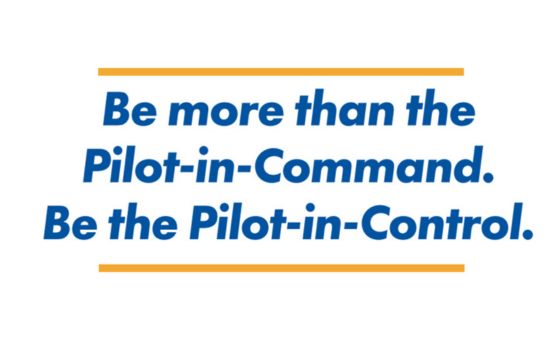We are all familiar with the term PIC—Pilot-in-Command. It is the legal term for the person aboard the aircraft who is ultimately responsible for its operation and safety of flight. It is important to note, however, that there is a difference between being in command and being in control.
Being in command means you “ought” to be responsible for the operation and safety of the flight. Being in control means you “are” acting responsibly for the operation and safety of the flight. It is this difference between what we ought to do and what we are actually doing that I want to draw to attention.
While being in control is obviously a requirement for the entirety of the flight, I would like to focus on controlling the landing process. If you study landing incidents and accidents, you will discover that sometimes the PIC quits being in control and instead becomes a passenger just along for the ride. There seems to be a sense that what is going to happen is inevitable and nothing can be done to prevent or mitigate the outcome. In part, this may happen if the pilot “freezes” at the controls. This may happen for one of three reasons:
- The pilot does not know what to do.
- The pilot is frightened and becomes immobile.
- The pilot is behind the airplane to such an extent that his control inputs are too late to be of use, or worse, aggravates the situation.
At the heart of the matter is the fact that a pilot may operate as the PIC but not have a PIC mentality. The pilot may not have developed the self-reliant mentality needed to truly take charge of every aspect of the flight. The “pilot-in-control” knows that it is important to make corrections when the need is small before the situation requires a large attitude or power changes. He does not try to “save” a bad landing. The “pilot-in-control” is not embarrassed to do a “go around” because he is in command and exercises his control to ensure a safe outcome, rather than press a bad situation.
Be more than the pilot-in-command. Be the pilot-in-control.










